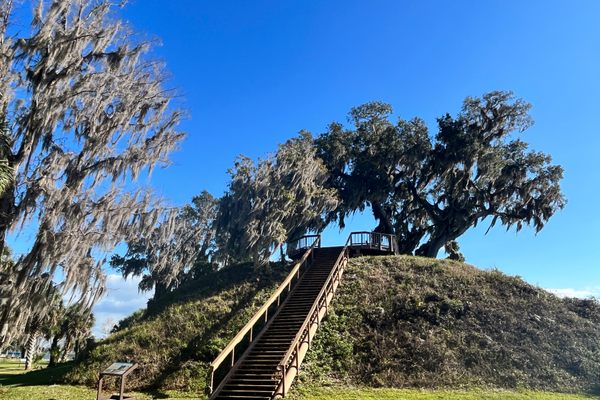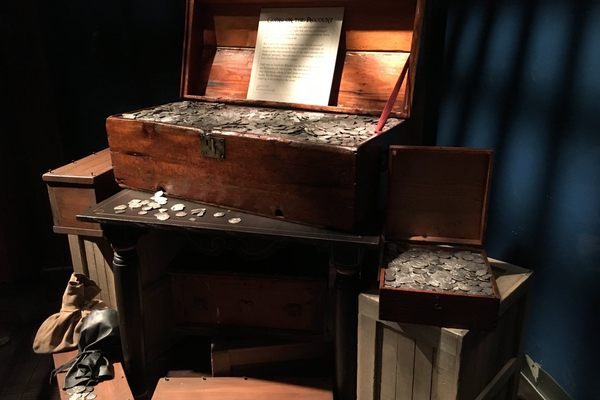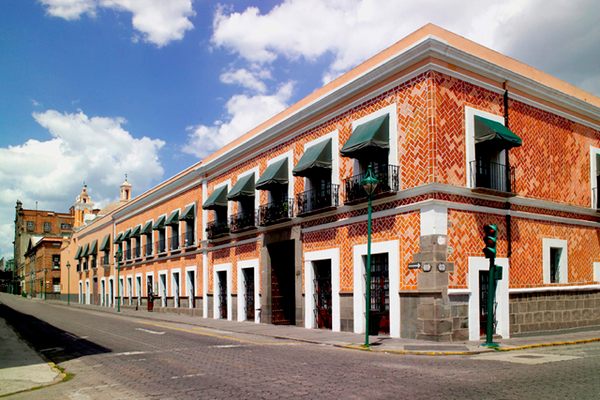About
The building that now houses the Museo de Historia Natural began its life as a school. Called the Artículo 123 Naciones Unidas, this was the town’s first primary school and was established by educator Amelia Wilkes in 1951. Not only did Wilkes serve as the school’s director, she also “managed the electrical supply, was head of the water commission and went on to become the first female sub-delegate when Baja Sur was still a territory of Mexico.” Though the school closed, when the museum opened its doors in 2006, the space became, once again, a site for learning and exploration.
Located in Plaza Amelia Wilkes Cesena, the museum tells the stories of this region, from the more recent history of Spanish colonization and the Mexican Revolution to the prehistoric wonders found beneath the ground and underwater.
The museum’s genesis, however, was the discovery of ancient tools. As Roberto Cuétara, the museum’s director told Los Cabos Guide in 2016, a 1992 construction project unearthed “many metates (a primitive mealing stone used for grinding grains and seeds) and manos de metate (the hand-held tool used for grinding).” The discovery of these tools was an archaeological marvel, and the Anthropology Institute of La Paz was notified immediately. “Construction was suspended for nine months while excavations continued,” Cuétara said. “Some of the discovered tools were determined to have been used in ceremonies, others in daily activities.”
This history hiding just below the surface, inspired the creation of the museum.
Inside the museum, the ancient tools sit alongside fossilized remains—dating back 2 million years— of a zebra’s jawbone found in the Sierra de la Laguna mountain range and a saber tooth tiger. In the lobby, bold murals depict the history of Los Cabos, from its Indigenous ancestors to Jesuit colonization.
But perhaps the most interesting aspect of the museum is its extensive collection of archeological finds. The archaeology room, one of seven unique study rooms in the museum, houses artifacts from Indigenous groups who once lived in the southern part of the Baja peninsula.
The Museo de Historia Natural is small, but within that small space, Cuétara and his team are working hard to preserve the fragile history of the region. The work is funded by both the local government and by donations, so keeping it going is always a challenge. “Our museum is very small,” Cuétara told Los Cabos Guide. “My hope, indeed my intention, is to create a larger museum and to dedicate this current space to the early history of Cabo San Lucas.” In early 2024, part of this dream was realized when the museum added an exhibition room named in Cuétara’s honor. This new space will hold a number of different artifacts, including pieces exploring the region’s sailing history.
Related Tags
Know Before You Go
Open Tuesday to Friday from 10 a.m. to 2 p.m. General admission $20MX Children, seniors, disabled people, students and teachers with ID free entry. Filming is prohibited. No food, drinks, pets, or bulky items allowed.
Yucatan: Astronomy, Pyramids & Mayan Legends
Mayan legends, ancient craters, lost cities, and stunning constellations.
Book NowPublished
September 18, 2024
Sources
- https://www.loscabosguide.com/culture-of-cabo-a-qa-with-roberto-cuetara-director-of-the-cabo-san-lucas-museum-of-natural-history/ https://christinewenzel.com/wp-content/uploads/2012/05/museo-de-las-californias.pdf
- https://www.loscabos.gob.mx/en-el-primer-bimestre-del-2024-el-museo-de-historia-natural-de-csl-contara-con-una-nueva-sala-de-exhibicion/






















